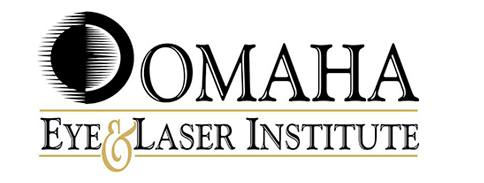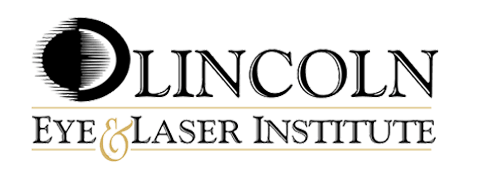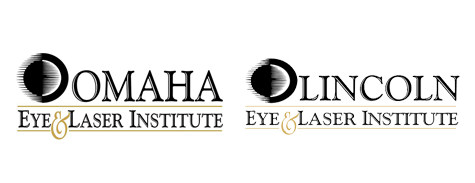What is the Cornea?
The cornea functions as a window for the eye and plays a large role in how the eye focuses. If the cornea is misshapen or opaque due to disease or injury, vision will be impaired. Common refractive issues arising from a misshapen cornea include myopia (nearsightedness); hyperopia (farsightedness); and astigmatism (eye shape). These common corneal issues can be corrected with contact lenses, glasses, or IntraLasik.
In conjunction with your natural crystalline lens, the cornea provides focusing power. If the cornea becomes weak or damaged serious visual problems may arise. Damaged corneas require special attention by our specialists. Typically, we treat the cornea with medication. If vision cannot be accurately corrected with medications, a corneal transplant may be required.
Your cornea is the clear tissue in front of your iris and pupil. Although it is completely clear, it actually has three layers. The cornea does not have blood vessels, relying on tears and the fluid behind your eye for nourishment. This is because the cornea needs to be completely clear for the best vision. When the cornea is damaged, obstructed or misshapen, this can affect vision. A misshapen cornea is a very common condition and can affect vision in many ways. Common conditions such as myopia or astigmatism, in which the cornea is misshapen, can be corrected with glasses and contacts, and even laser surgery.
How Does Damage to the Cornea Occur?
Damage to the cornea may arise from various reasons such as hereditary issues, chemical burns, blunt object trauma, viruses or bacteria. Conditions that may require a patient to seek a cornea transplant involve clouding of the cornea, keratoconus, Fuch’s dystrophy, irregular corneal surface tissue growths, or corneal swelling.
Can Cornea Problems be Prevented?
Corneal infections caused by bacteria and viruses can be prevented by good hygiene and such measures include not sharing eye makeup, contact lens cases, contact lens solution, or eye drops with others. Following strict guidelines for contact lens hygiene can decrease the risk of corneal infections. Corneal disease resulting from hereditary factors, like dystrophies, cannot be prevented, but vision can often be preserved with early detection.
Keratoconus
One corneal disorder not easily corrected with glasses or contact lenses is Keratoconus. Keratoconus is a disease that causes gradual steepening of the cornea. As the disease progresses the cornea becomes more irregular and vision is compromised. The cause of keratoconus is unknown; however, genetics and excessive eye-rubbing are thought to contribute. Keratoconus typically arises during puberty. While some patients are able to manage their keratoconus with specialty contact lenses, others with poorer resulting vision may require a corneal transplant. A corneal specialist will determine whether a patient is a good candidate for a corneal transplant (otherwise known as penetrating keratoplasty, or PKP).
Corneal Crosslinking
Corneal crosslinking is an FDA-approved treatment for Keratoconus involving specially formulated riboflavin is instilled on the cornea after removing its epithelial surface. After the medication has fully permeated the cornea, ultraviolet light is used to activate the compound and crosslink the individual corneal tissue fibers, restoring its strength and halting the progression of the keratoconus.
This procedure can help stabilize the cornea with the aim of preventing the need for a corneal transplant. This procedure is available at Omaha Eye and Laser.
Fuchs Endothelial Dystrophy
Another corneal disease that may require surgical treatment is Fuchs Endothelial Dystrophy. In Fuchs the back layer of the cornea (endothelium) is compromised, leading to an accumulation of fluid or edema in the cornea. This results in hazy, cloudy vision. Fuchs is a genetic condition that typically presents later in life. Early and mild cases of Fuchs can be treated with topical drops. These drops work by dehydrating the cornea and reducing corneal edema. If topical drops do not offer sufficient vision, a partial thickness corneal transplant (DSEK) may be considered.
PKP (Full-Thickness Corneal Transplant)
Corneal transplants are performed using a donor cornea. The entire central portion of the cornea is replaced and held in place with sutures. Because the cornea possesses no blood vessels, rejection rates are low in comparison to other types of transplants. Recovery, though, can be lengthy nonetheless and requires frequent follow-up visits.
Lamellar Keratoplasty
At times a lamellar (partial) keratoplasty or transplant can be performed instead of a full transplant. This is sometimes an option in Keratoconus and diseases limited to the anterior portion of the cornea. Partial transplants may result in lower rates of potential rejection compared to a full transplant.
DSEK (Partial Thickness Corneal Transplant)
DESK (Descemet’s Stripping Endothelial Keratoplasty) is a partial thickness corneal transplant. During this procedure, only the posterior layers of the cornea (endothelium) and 100 microns of stromal tissue are transplanted from a donor cornea. This tissue will replace the compromised endothelium and help restore vision. DSEK is now an established procedure and is done in place of a full-thickness corneal transplant for certain diseases affecting only the back layer of the cornea. Benefits of DSEK include fewer sutures, smaller incision, decreased risk or corneal rejection and wound rupture, improved healing time, and improved visual prognosis.
DMEK
In DMEK only the very last layer of the cornea is transplanted. This procedure is more delicate and not all patients are good candidates. Eyes with previous injury, lack of a lens, or cataract surgery may not be optimal candidates. DMEK offers general superior quality of the final vision after surgery over DSEK procedures due to its lower level of invasiveness.





